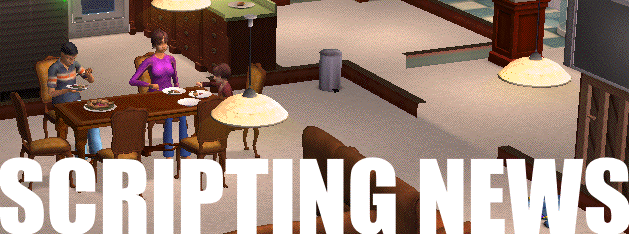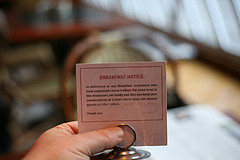
 Google Maps now show subway routes
Google Maps now show subway routes 
This is a huge feature for people who like to walk in NYC, as I do.
Now when you click on a blue M, which is the symbol for a subway station, it hightlights the route of one of the lines going through that station.
For example, I clicked on the High Street/Brooklyn Bridge station, and it showed the route of the A and C lines in blue.
Click on Grand Central and it shows the routes for the Lexington Ave lines, the 4, 5 and 6. And the Flushing line (the 7).
This is a very important connection. Not sure when it came online, but all NYers and esp people who visit, will want to know.
 Users creating products for users
Users creating products for users 
 I've long believed that the Internet will turn commerce upside-down. That what happened to journalism, software, music and video, is also happening to research and development.
I've long believed that the Internet will turn commerce upside-down. That what happened to journalism, software, music and video, is also happening to research and development.
The benefits of centralization fade out, smaller markets work better with fast world-wide shipping networks. And development teams can be widely distributed. But most important -- it's easier to hear what users want. And the barriers to entry for users becoming developers drop, as technical information flows better.
Users creating products for users.
In the centralized way of doing R&D there was distance and secrecy. A team of geniuses are sequestered for however long it takes to make their magic. Then they come down from the mountain to deliver the product, and we all buy one and talk about it and love it, while they return to the mountain and we wait for the next one. This isn't just how Apple does it, it's how everyone does it. They've just mastered the process better than anyone else.
The other extreme is users creating products for other users.
I felt blogging would play a key role in bootstrapping this method. That communities of users would coalesce at blogs, exchange ideas over long periods of time, and gradually a consensus would develop of what the next version of a product will look like. That much certainly did happen.
Then I expected companies to form out of these blogs, to create the products the users wanted, that we knew they wanted (because they said so, and we were listening).
We needed to learn how to listen better, and we had to learn how to be easier to listen to.
Note that this is different from Craig's List and eBay -- which are users selling to other users. Definitely a step on the path, but not all the way there.
Users making products for users. No middlemen. No ivory tower. No sequestering. No waiting. An open visible development process. No secrecy.
Well, anyway, now it's happening. And it's a race to see who has the model that works. Maybe they all will work, or maybe a hybrid, combining the features of one or more, will be the way it works. But in the next few years, this is where the big innovation in commerce will be. And it's going to be bigger than Google or Apple or Facebook. In many ways those companies are just providing role models for the next generation of entrepreneurs. Perhaps in some ways as negative role models, showing how not to do it.
Anyway, here are four examples of users creating products for users.
I'll let the sites speak to you for themselves.
 New camera, new eyes
New camera, new eyes 
When my father died last year, he left behind several cameras. I got one of them, and am now starting to use it. It's a Canon EOS 5D. I don't know much about cameras, but Doc Searls says it's a good one. It's the one he uses, and he takes wonderful pictures.
So I bought an inexpensive 50mm lens, and yesterday I started taking pictures. And this morning when I went out to breakfast, of course I took the camera. Here are three of the pictures. If you click on the thumb you will get a medium resolution version of the picture.
To give you an idea of how much detail is there, here's a full-resolution section of one of the pictures.
The first thing I noticed is that you get new eyes when you get such an upgrade. Now when I walk around I see things I didn't see before, because I'm looking for pictures I could never take before.
I think this is going to as big an eye-opener as getting the bike was back in August. ![]()








